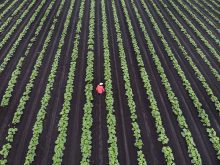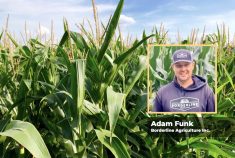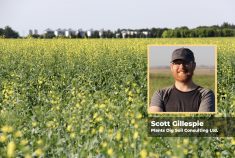In recent years, Canadian producers have significantly increased their use of genetically modified crops. At the same time, a growing number of farms are obtaining organic certification. The concurrent expansion of these two practices will almost inevitably lead to GM and organic fields being adjacent. What are the legal implications when GM products drift onto a neighbour’s field?
Particle drift can have serious repercussions. Organic farmers may lose their certification, which can take years to obtain again. Non-organic farmers can also be affected, since certain importers have strict rules about GM content and may close their borders if GM particulates are detected in any shipments.
Read Also

Riding the tariff roller-coaster
What producers are doing to minimize the risk created by ongoing trade uncertainty.
Many countries in Europe and South America have set out legal regimes apportioning liability when GM particles travel. A test case went to trial in Australia in February; the judge is expected to release his decision shortly. How would a Canadian court tackle this issue?
One possibility is that a court would compare escaping particles to escaping cattle. Courts have long held that you must pay your neighbour for losses suffered at the “hooves and teeth” of escaping cattle. The underlying principle is that when you keep animals — which have a propensity to escape and cause harm — for your own benefit, you must bear the risk of the damage they could cause, and compensate others if that risk actualizes.
- More Guide Legal with Naomi Loewith: Landmark decision in court battle between GMO and organic farm
A court could expand this principle to cases where a farmer plants GM crops, as seeds or particles may drift and can cause harm to non-GM growers. Under this analogy, producers who grow GM crops for their own profit could be liable for damage caused to neighbours’ fields, including the losses suffered if they lose access to organic or other markets.
Policy considerations
Before making the jump to a new liability regime, a judge will consider whether there are policy reasons not to expand the law to the new situation.
There are some policy reasons that might prevent such an expansion. First, courts are reluctant to put someone in a position where they could be liable for an “indeterminate amount for an indeterminate time to an indeterminate class.” Since GM particles can travel long distances, and could have serious financial and international trade implications, imposing liability on GM producers might create too much risk and uncertainty.
Second, courts are cautious not to make someone liable for following ordinary business practices. As common farming practice evolves to include the use of GM crops, the law may well evolve to embrace that practice.
Third, there may be nothing that a farmer can do to prevent the escape of GM particles. Unlike cattle, which can be contained with fencing commensurate with animals’ abilities, GM particles may escape regardless of the protections used. Holding a farmer liable for any drift, even if all precautions were taken, would contradict the law’s long-standing support for coexistence of different practices where possible.
Best practices
We do not yet know if a court would consider any of these policy reasons in deciding whether liability for escaping cattle might be extended to liability for escaping GM particles. The legislature may also step in and codify responsibilities. Until then, there are some ways that both GM and organic producers can protect their interests.
First, if you use GM seed, follow the licensing agreement of the crop developer. For example, Monsanto’s Technology Stewardship Agreement requires a five-metre buffer zone around any GM field. Compliance with these terms will not be a full defence, but failing to follow them will almost certainly be negligent.
Second, where there are options for planting GM crops, choose the one that best protects your neighbour. If only some fields will have GM seeds, choose fields away from a sensitive neighbour where possible. When harvesting, swathing can result in more drift than direct heading, so it may be necessary to direct head to protect a neighbour.
Organic farmers should also take precautions. First, know the governing regulations for your organic organization. Some organic classifications disallow produce from a field where prohibited products were “applied,” but accept crops if prohibited products arrived by “environmental contamination.” Ensure you understand your vulnerability and risk.
Second, if you suspect contamination, keep records. Document what was discovered, where, when, the prevailing winds, and what you have observed of your neighbour’s practices. Take photographs where possible (this advice applies to any type of legal dispute: the person with best records almost always has the upper hand).
The last two pieces of advice apply to both sides of the dispute. If you seek the advice of an agronomist or other expert before planting, disclose all relevant information to your adviser — including knowledge of your neighbour’s practices — and follow the advice received or document why you acted against it. Failure to share all the facts or ignoring your advisers could be used as evidence of unreasonable practices.
Finally, talk to each other. Explain what you are doing, what concerns you have, how your neighbour’s actions might affect you, and suggestions for accommodating each other. In many cases, the conversation could prevent the problem. In every case, it will demonstrate that you tried to be reasonable, and judges always try to find in favour of “the reasonable person.”
Naomi Loewith is a business litigator at Lenczner Slaght in Toronto. Naomi represents clients across a range of sectors in civil litigation, administrative disputes and regulatory proceedings.














